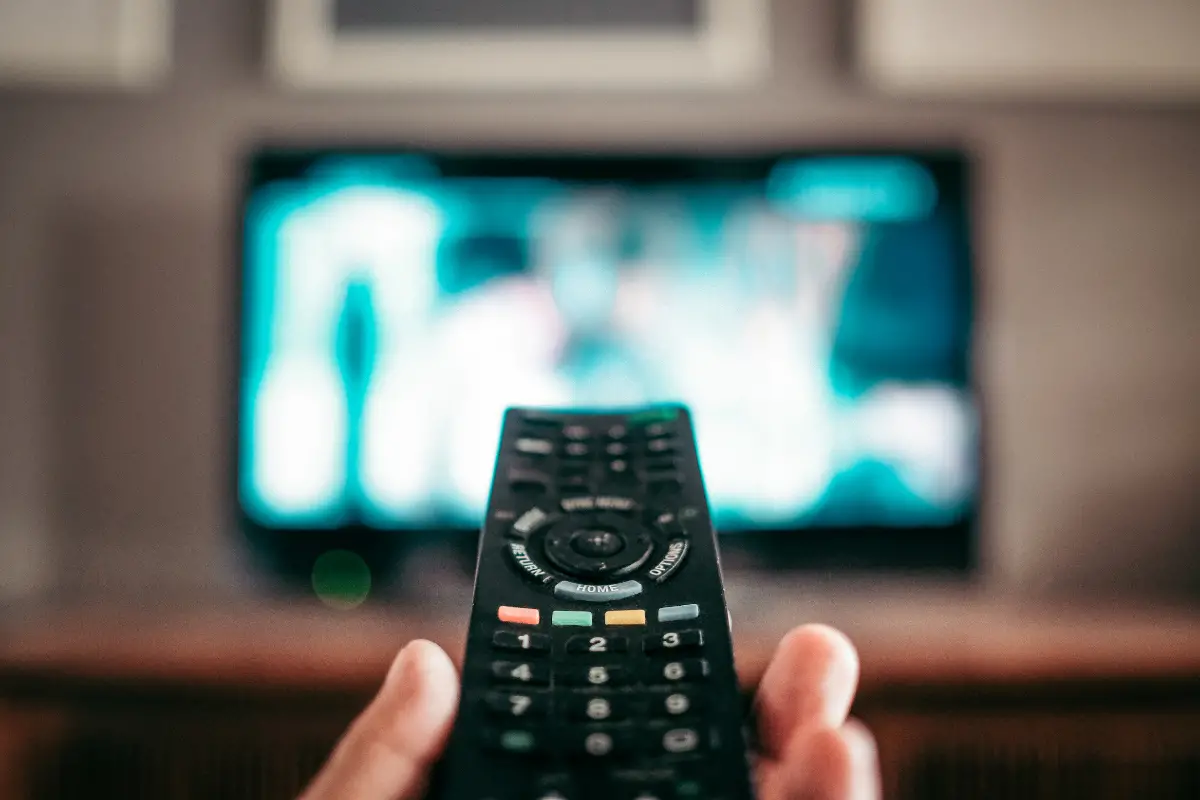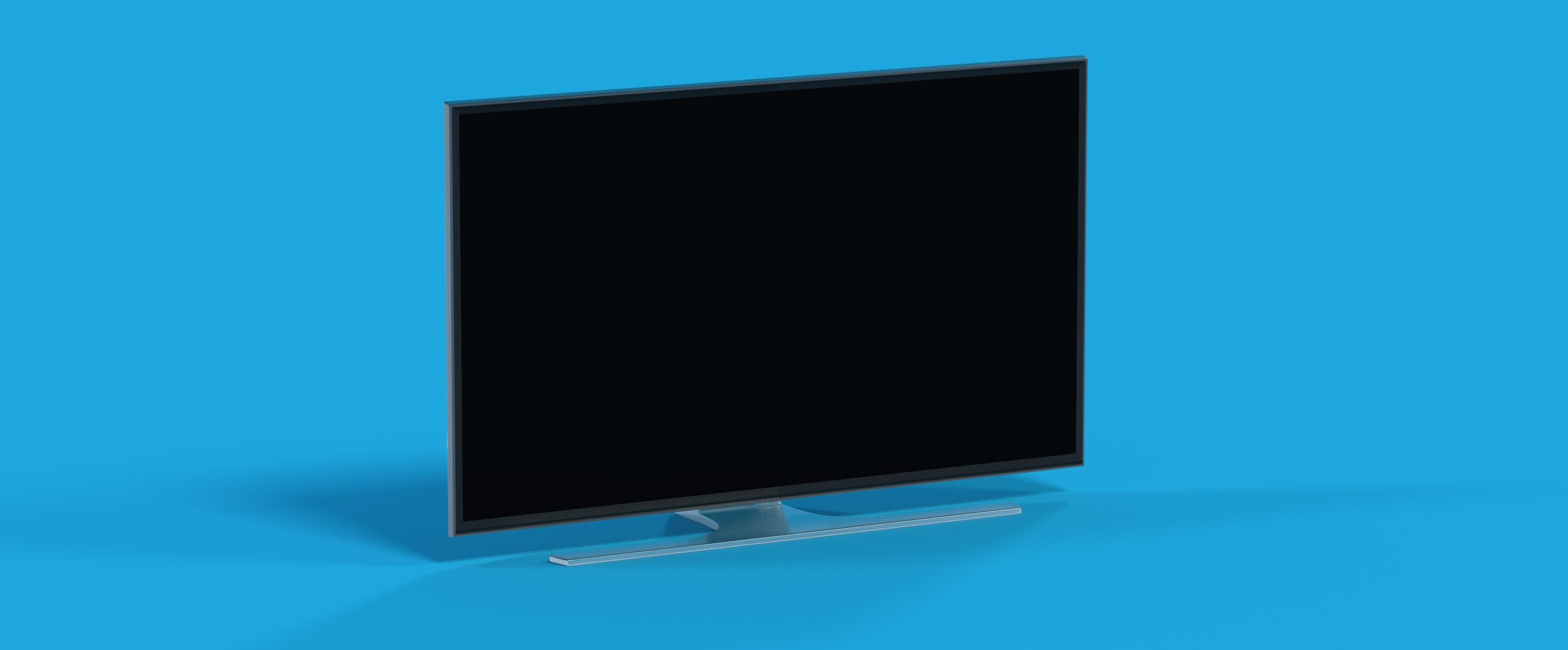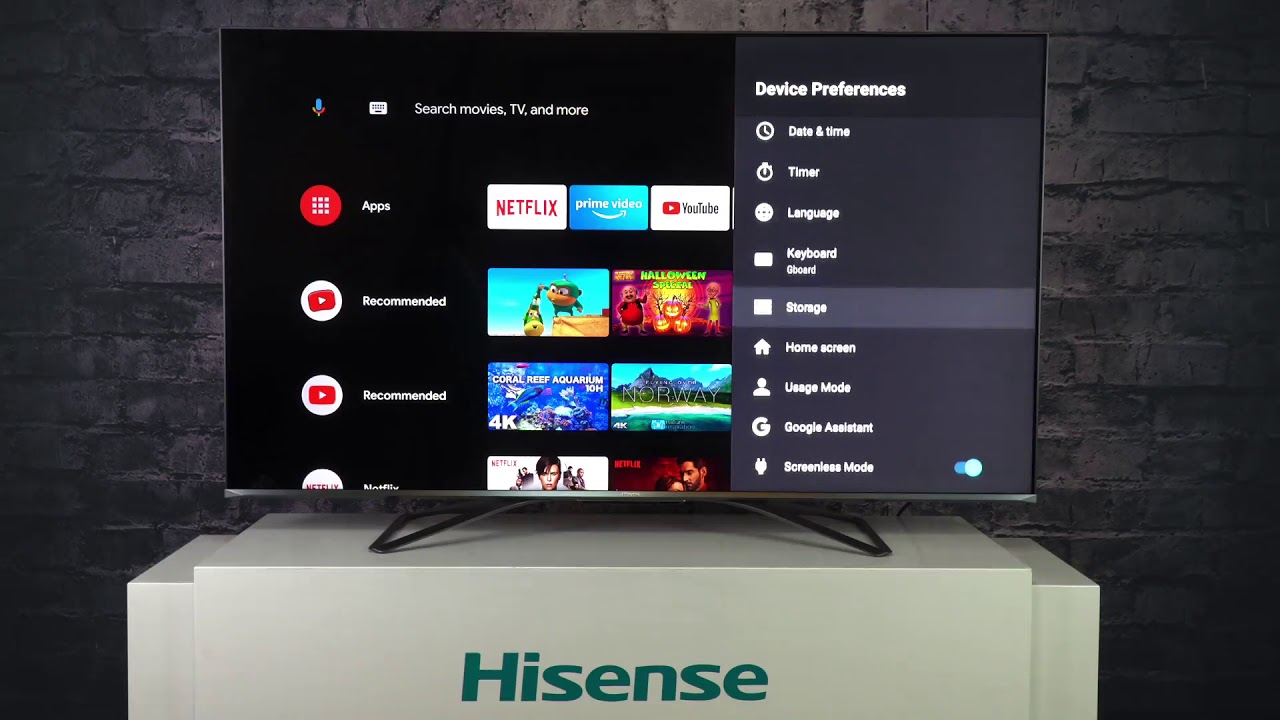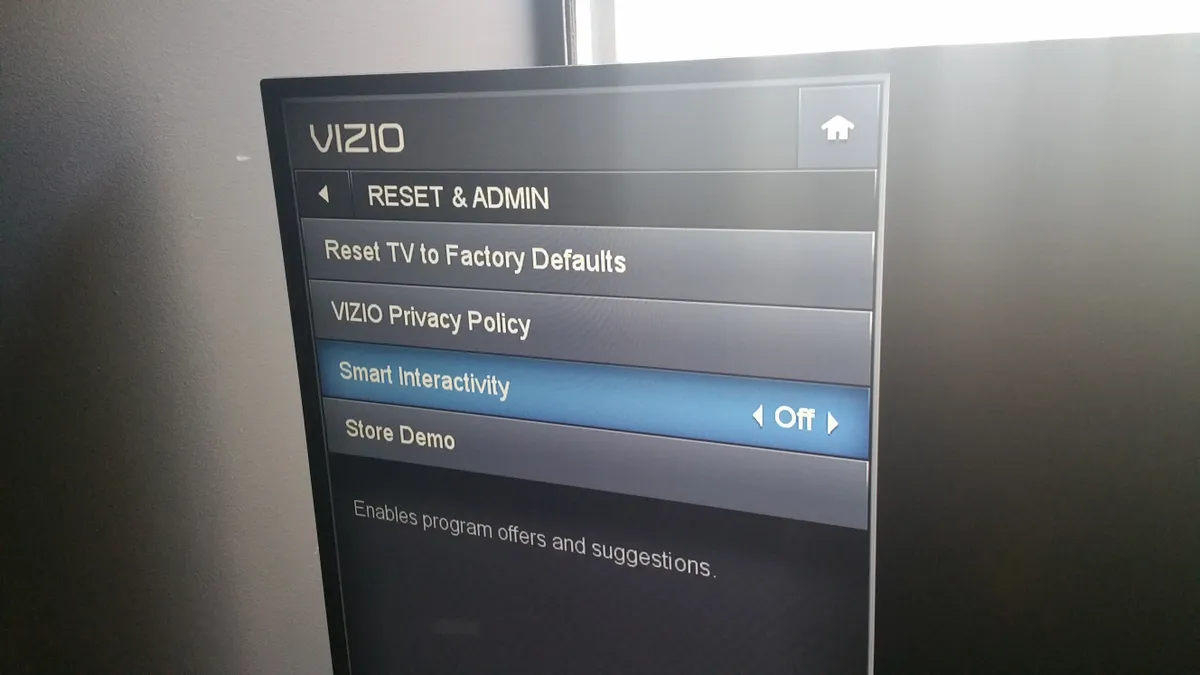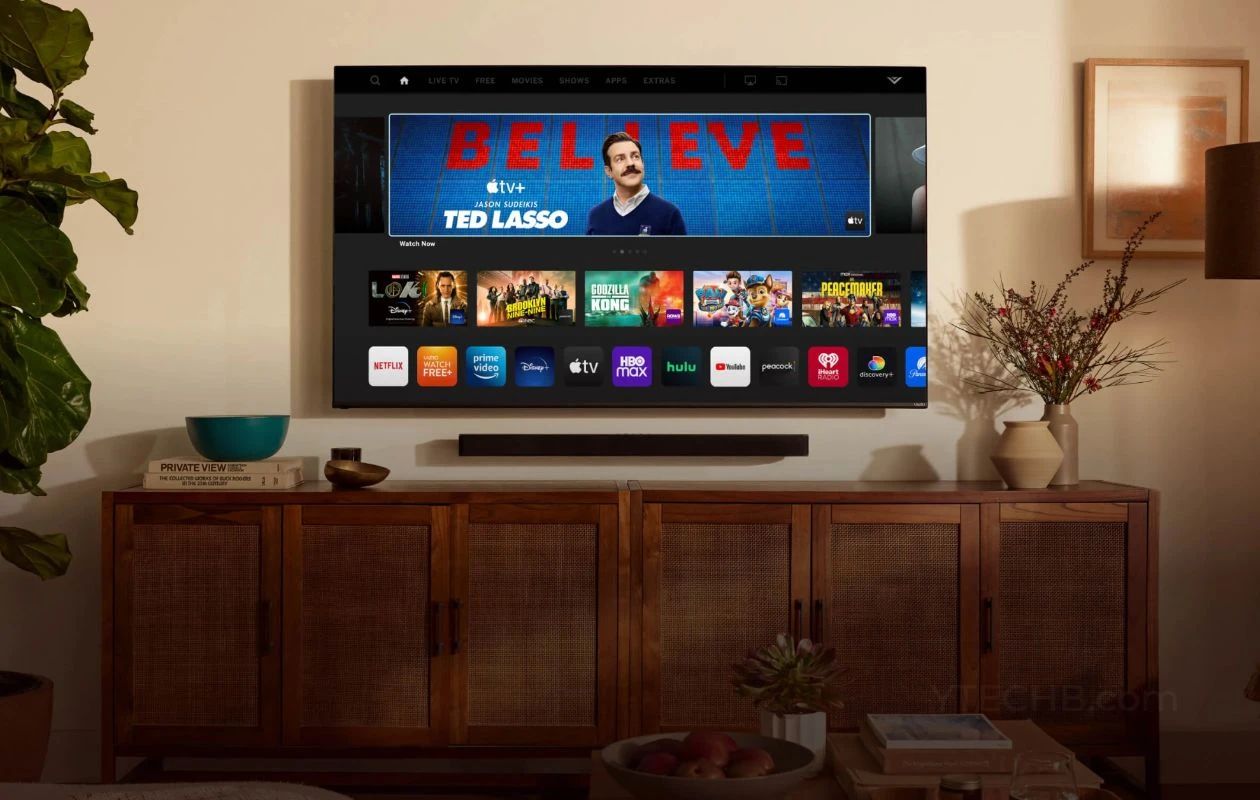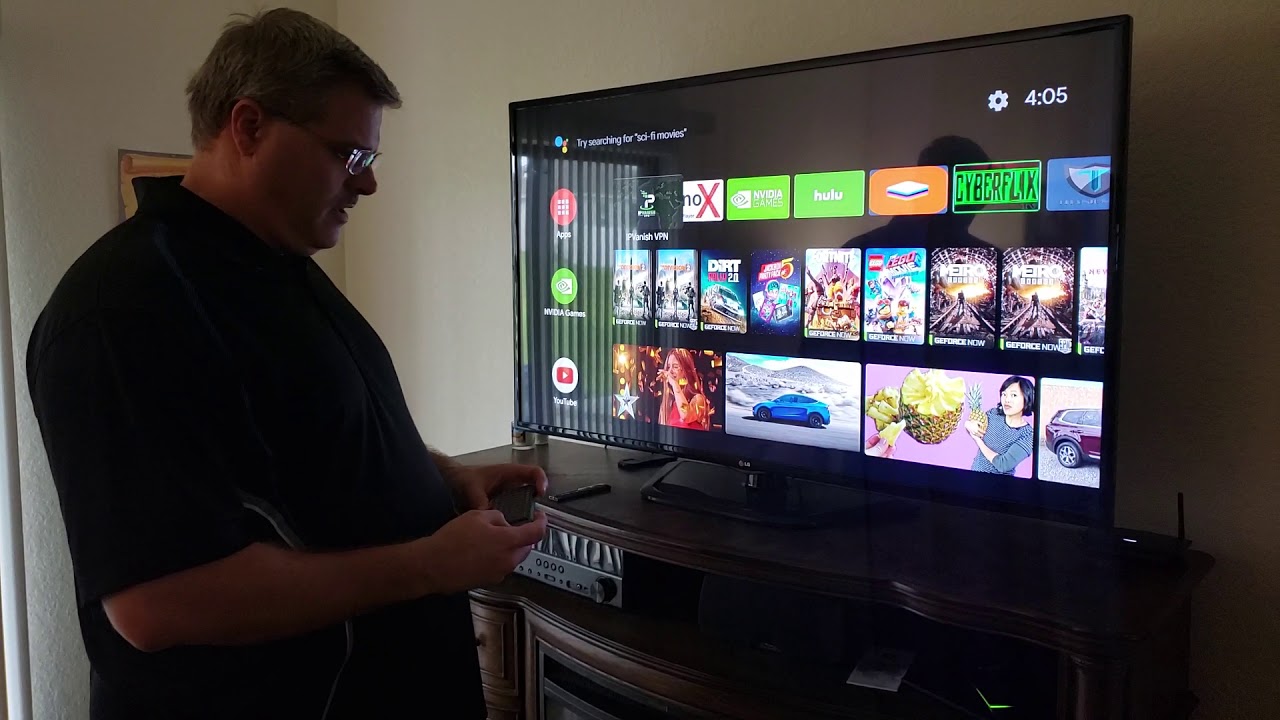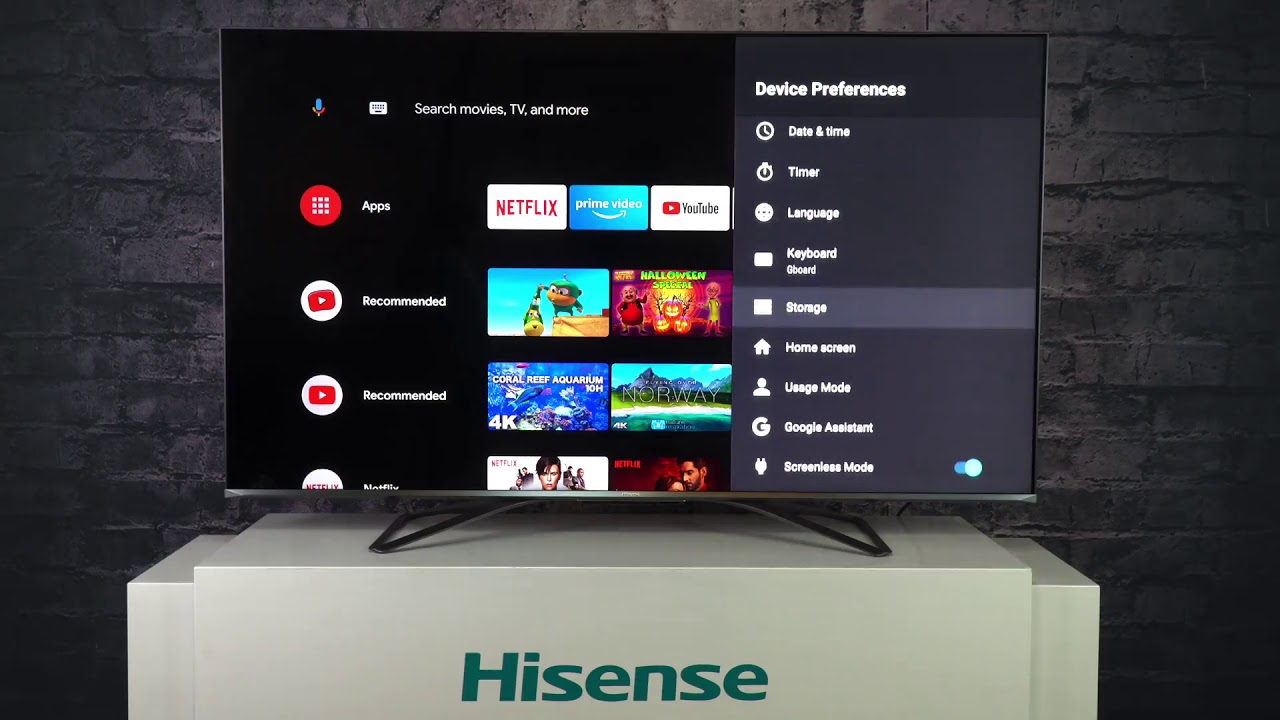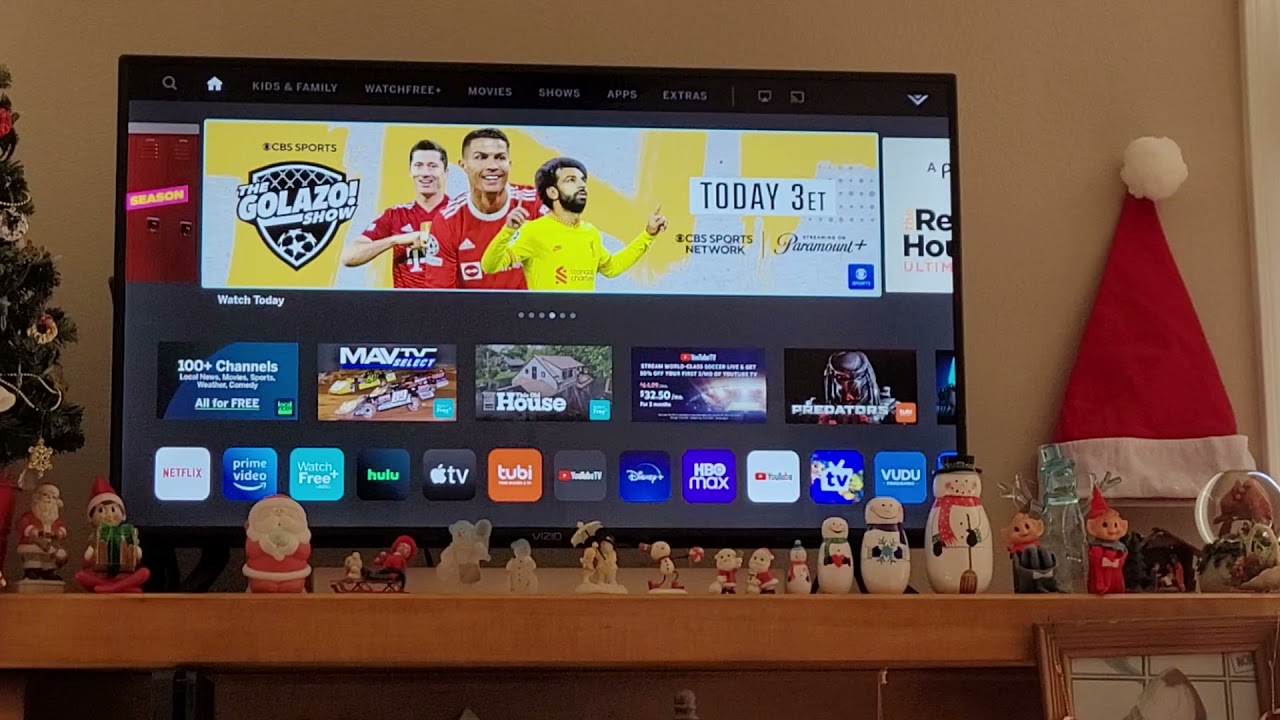Common Causes of Smart TV Freezing
Smart TVs are a popular choice for entertainment, offering a wide range of streaming services, apps, and connectivity options. However, it can be frustrating when your smart TV freezes up, disrupting your viewing experience. There are several common causes for this issue, ranging from insufficient memory to network connection problems. Understanding these causes can help you troubleshoot and resolve the freezing issue effectively.
1. Insufficient Memory or Storage Space: Smart TVs typically have limited memory and storage capacity. If your TV is overloaded with apps or saved content, it can lead to freezing. Clearing unnecessary apps or deleting unused files can help free up memory and solve the problem.
2. Network Connection Issues: A stable and fast internet connection is crucial for smooth streaming on your smart TV. If your network is unstable or weak, it can cause freezing. Check your Wi-Fi signal strength, move your router closer to the TV, or consider using an Ethernet cable for a wired connection.
3. Firmware or Software Updates: Outdated firmware or software can also lead to freezing issues. Regularly check for updates for your TV’s operating system or specific apps to ensure you have the latest version installed. Updating can fix bugs and improve performance.
4. Overheating: Smart TVs generate heat when in use, and if they don’t have proper ventilation, it can lead to overheating and freezing. Ensure that your TV has adequate airflow and is not placed in a confined space.
5. App-Related Problems: Certain apps on your smart TV might have compatibility issues or be poorly optimized, causing freezing. Try closing the problematic app or uninstalling it to see if the freezing stops. Alternatively, you can check for available updates for the app or contact the app developer for assistance.
6. HDMI or Cable Connection Problems: Faulty HDMI cables or loose connections can cause freezing. Check the HDMI or cable connections between your TV and external devices like set-top boxes or gaming consoles. Ensure they are securely plugged in and not damaged.
By understanding these common causes of smart TV freezing, you can take the necessary steps to resolve the issue and enjoy uninterrupted entertainment. The next section will provide troubleshooting steps to help fix your TV freezing problem.
Insufficient Memory or Storage Space
One of the common causes of smart TV freezing is insufficient memory or storage space. Smart TVs typically have limited internal memory and storage capacity, which can easily get filled up with apps, saved content, and system data over time. When the available memory or storage space becomes scarce, it can lead to lagging and freezing issues.
To resolve this problem, it’s essential to free up memory and storage space on your smart TV. Here are some steps you can take:
- Delete Unused Apps: Go through the list of installed apps on your TV and identify the ones you no longer use. Uninstalling these unused apps will not only free up memory but also improve the overall performance of your smart TV.
- Clear App Cache: Some apps store temporary data and cache files that take up valuable space. Clearing the cache of individual apps can help free up memory. You can usually find this option in the settings of each app or under the TV’s system settings.
- Remove Unnecessary Saved Content: If you have downloaded movies, music, or other files on your smart TV, consider deleting those you no longer need. Remember to back up any important files before deleting them.
- External Storage Options: Check if your smart TV supports external storage devices such as USB drives or external hard drives. By connecting an external storage device, you can move apps or content to free up internal space.
- Optimize Settings: Look for power-saving or memory management settings in your TV’s menu. Enabling these settings can help optimize memory usage and improve overall performance.
Regularly monitoring and managing the memory and storage space on your smart TV is essential to prevent freezing issues. By following these steps and ensuring sufficient available space, you can enjoy uninterrupted viewing and a smoother user experience.
Network Connection Issues
A stable and reliable internet connection is essential for seamless streaming on your smart TV. Network connection issues can cause freezing problems, resulting in interruptions to your viewing experience. Here are some common network connection issues and steps to resolve them:
- Weak Wi-Fi Signal: If you are experiencing freezing on your smart TV, it may be due to a weak Wi-Fi signal. Check the signal strength on your TV and ensure that you are within range of your router. If the signal is weak, consider moving the router closer to your TV or using Wi-Fi extenders to improve coverage.
- Interference: Electronic devices like cordless phones, microwaves, or neighboring Wi-Fi networks can interfere with your Wi-Fi signal. Try to minimize the number of devices operating on the same frequency range or switch to a less congested Wi-Fi channel to reduce interference.
- Bandwidth Limitations: Insufficient bandwidth can cause buffering and freezing issues on your smart TV. Check the internet speed provided by your ISP and compare it to the requirements of the streaming services or apps you use. If necessary, consider upgrading to a higher-speed internet plan.
- Network Congestion: During peak hours, your internet connection may suffer due to network congestion. This can lead to poor streaming quality and freezing. Try streaming during off-peak hours to avoid congestion-related issues.
- Wired Connection: If possible, consider using an Ethernet cable to connect your smart TV directly to the router. A wired connection is more stable and can eliminate Wi-Fi-related issues that cause freezing.
Additionally, make sure that your router firmware is up to date. Manufacturers often release firmware updates that improve performance and address connectivity issues.
If you continue to experience network connection problems and freezing on your smart TV, it may be helpful to contact your internet service provider (ISP) for further assistance or consider seeking professional help to diagnose and resolve the issue.
Firmware or Software Updates
Keeping your smart TV’s firmware and software up to date is crucial for optimal performance and to prevent freezing issues. Outdated firmware or software can lead to compatibility problems, bugs, and other performance issues. Here’s what you need to know about firmware and software updates:
Firmware Updates: Firmware is the built-in software that controls the functions of your smart TV. Manufacturers regularly release firmware updates to enhance performance, improve compatibility with apps and streaming services, and fix any known issues. Check for firmware updates in your TV’s settings or on the manufacturer’s website. Follow the provided instructions to download and install the latest firmware version.
Software Updates for Apps: Apps installed on your smart TV also receive regular updates from their developers. These updates often include bug fixes, security patches, and performance enhancements. Set your smart TV to automatically download and install app updates or manually check for updates in the app store on your TV. Update any outdated apps to ensure they are running smoothly.
System Updates: In addition to firmware and app updates, your smart TV’s operating system may receive periodic updates as well. These updates can provide new features, improved stability, and security enhancements. Check for system updates in your TV’s settings and follow the instructions provided to update your TV’s operating system if available.
It is important to note that firmware and software updates can vary depending on the make and model of your smart TV. Make sure you are downloading updates from official sources and follow the instructions carefully to avoid any potential issues during the update process.
Regularly checking for and installing firmware and software updates is an essential step in resolving freezing issues on your smart TV. These updates can address known bugs and improve overall performance, providing you with a smoother and more enjoyable viewing experience.
Overheating
Overheating is a common problem that can cause your smart TV to freeze up. Smart TVs generate heat while in operation, and if not properly ventilated, that heat can build up and lead to freezing issues. Here’s what you need to know about overheating and how to prevent it:
Adequate Ventilation: Ensure that your smart TV has sufficient space around it for proper airflow. Avoid placing it in enclosed cabinets or tight spaces that restrict airflow. Make sure there is at least a few inches of clearance on all sides of the TV.
Clean the Vents: Dust and debris can accumulate on the vents of your TV, obstructing airflow and causing it to overheat. Regularly clean the vents with a soft cloth or a gentle vacuum cleaner to prevent the buildup of dust and ensure optimal ventilation.
Avoid Blocking the Vents: Make sure that nothing is blocking the vents on the back or sides of your smart TV, such as curtains, cables, or other objects. Blocking the vents can prevent the hot air from escaping, leading to overheating.
External Cooling: If you are facing persistent overheating issues, you can consider using external cooling methods such as cooling pads or fans. These accessories can help dissipate heat and keep your smart TV’s temperature within a safe range.
Placement Considerations: If your TV is wall-mounted, ensure that there is enough space between the back of the TV and the wall for adequate airflow. Also, avoid placing the TV near sources of heat, such as direct sunlight or heating vents, as it can contribute to overheating.
By implementing these measures, you can help prevent overheating and minimize freezing issues on your smart TV. Regularly monitoring the temperature of your TV and taking appropriate action to keep it cool will help ensure a smooth and uninterrupted viewing experience.
App-Related Problems
One of the common causes of smart TV freezing is app-related problems. Sometimes, certain apps on your smart TV may have compatibility issues, bugs, or poor optimization that can lead to freezing. Here’s what you need to know about app-related problems and how to resolve them:
Close Apps: If a specific app is causing freezing issues, try closing it and then reopening it. This simple step can sometimes resolve temporary glitches or memory-related issues that may be causing the app to freeze.
Uninstall Problematic Apps: If freezing occurs frequently with a particular app, consider uninstalling it from your smart TV. You can usually uninstall apps through the TV’s settings or app management menu. Once the app is uninstalled, check if the freezing problem persists.
Update Apps: App developers often release updates to fix bugs, improve performance, and enhance compatibility with smart TVs. Check for available updates for the problematic app in the app store on your TV or contact the app developer for assistance. Updating the app to the latest version may resolve freezing issues.
Contact App Support: If the freezing problem persists even after updating or uninstalling the app, it could be a more complex issue. In such cases, it may be beneficial to contact the app developer’s support team for further assistance. They can provide specific troubleshooting steps or investigate the issue further.
Factory Reset: If freezing issues occur across multiple apps on your smart TV, performing a factory reset may help. This will restore your TV to its original settings and remove any software or app-related glitches that could be causing freezing problems. However, note that a factory reset will erase all personalized settings and data on your TV, so make sure to backup any important information before proceeding.
It’s worth noting that while app-related problems are relatively common, they can often be resolved through these troubleshooting steps. By investigating the apps you use and taking appropriate action, you can enjoy a smoother and more reliable experience on your smart TV.
HDMI or Cable Connection Problems
HDMI and cable connection problems can also contribute to freezing issues on your smart TV. A faulty HDMI cable or loose connection can disrupt the signal transmission, leading to freezing or intermittent glitches in the display. Here’s what you need to know about HDMI or cable connection problems and how to address them:
Check the Cable Connections: Ensure that all cables connecting your smart TV to external devices like set-top boxes, gaming consoles, or sound systems are securely plugged in. Loose connections can cause signal loss and freezing. Take a moment to inspect the cables and make sure they are not damaged or frayed.
Try a Different HDMI Port: If you are using HDMI cables to connect external devices to your smart TV, try using a different HDMI port on the TV. Sometimes, a particular HDMI input may have a faulty connection, causing freezing issues. Switching to a different port can help determine if the problem lies with the port or the cable.
Swap Cables: If you suspect that a particular HDMI cable is causing the freezing problem, try swapping it out with a known working cable. This will help determine if the issue is with the cable itself or another component in the setup.
Test with a Different Device: To isolate the cause of the freezing issue, connect a different device or source, such as a DVD player or game console, to your smart TV using the same cables. If the freezing problem persists with a different device, it indicates that the issue may lie with the TV or cables, rather than the original device.
Consider Using High-Quality Cables: Using high-quality HDMI cables can minimize signal loss and improve overall performance. Investing in certified, high-speed HDMI cables can help ensure a stable and reliable connection between your smart TV and external devices.
In summary, verifying and maintaining proper HDMI or cable connections between your smart TV and external devices is essential for avoiding freezing problems. Taking the time to check and troubleshoot these connections can help resolve issues and provide a smoother viewing experience.
Troubleshooting Steps to Fix Smart TV Freezing
If your smart TV is freezing, there are several troubleshooting steps you can take to resolve the issue. Here are some common methods that can help you get your TV back to smooth operation:
1. Resetting the TV: Performing a soft reset can often resolve minor software glitches causing freezing issues. To do this, simply unplug your TV from the power source and wait for a few minutes. Then, plug it back in and turn it on. This process can clear temporary memory and restore the TV’s settings to default.
2. Clearing Cache and Data of Apps: Clearing the cache and data of individual apps can help resolve freezing problems related to app-specific issues. Go to the settings menu of your smart TV, locate the apps list, and select the app causing freezing. From there, you can clear the cache and data associated with the app.
3. Updating Firmware and Software: Ensure that your smart TV has the latest firmware and software updates installed. Check for updates in the settings menu of your TV or on the manufacturer’s website. Keeping your TV’s operating system and apps up to date can resolve known bugs and improve overall performance.
4. Checking Network Connection: Verify that your smart TV is connected to a stable and reliable network connection. Check the Wi-Fi settings on your TV to ensure it is connected to the correct network. If the connection is weak or unstable, consider moving the router closer to the TV or using a wired Ethernet connection for a more reliable connection.
5. Ensuring Adequate Ventilation: Make sure your smart TV has proper ventilation and is not placed in a confined space. Ensure that there is enough clearance around the TV for proper airflow, and clean the vents regularly to prevent overheating.
6. Checking HDMI or Cable Connections: Verify that all HDMI or cable connections between your smart TV and external devices are secure and not damaged. Sometimes, a loose or faulty connection can cause freezing. Try reconnecting the cables or swapping them out to determine if any specific cable is causing the issue.
By following these troubleshooting steps, you can often resolve freezing issues on your smart TV and restore optimal performance. If the problem persists, it may indicate a more complex underlying issue, and it may be necessary to seek professional assistance.
Resetting the TV
Resetting your smart TV is a simple yet effective troubleshooting step to resolve freezing issues. A reset can help clear temporary memory, reset settings, and restore the TV to its default state. Here’s how to reset your TV:
1. Soft Reset: A soft reset is the most common method to reset a smart TV. To perform a soft reset, simply unplug your TV from the power source and wait for about 1-2 minutes. This allows any residual power to dissipate, effectively resetting the TV’s software. After the waiting period, plug the TV back in and turn it on. This soft reset can often fix minor software glitches causing freezing issues.
2. Hard Reset: If the soft reset doesn’t resolve the freezing problem, you can try a hard reset. Be aware that a hard reset will erase all personalized settings and data on your TV, reverting it back to its original factory settings. The exact steps to perform a hard reset may vary depending on your TV model, so consult the user manual or manufacturer’s website for specific instructions. Common methods for a hard reset include pressing a combination of buttons on the TV remote or navigating to the reset option in the TV’s settings menu.
3. Power Cycling: Power cycling is another method that can help resolve freezing issues. Instead of unplugging the TV, simply turn it off and unplug the power cord from the wall outlet. Wait for a couple of minutes, then plug it back in and turn the TV on. This process can sometimes clear temporary software glitches and restore the TV’s normal operation.
Before performing a reset, it’s a good idea to back up any important settings or data if possible. Resetting the TV should be considered as a last resort when other troubleshooting steps have failed to resolve the freezing issue.
If the freezing problem persists even after a reset, it may indicate a more complex underlying issue. In such cases, it’s recommended to contact the TV manufacturer’s support or seek professional assistance for further troubleshooting and repair.
Clearing Cache and Data of Apps
Clearing the cache and data of apps on your smart TV can help resolve freezing issues that are specific to certain applications. Over time, apps accumulate temporary files and data, which can lead to performance problems, including freezing. Clearing the cache and data of individual apps can help refresh them and improve their functioning. Here’s how you can do it:
1. Access App Settings: Navigate to the settings menu on your smart TV and find the section related to apps or application management. The location of this option can vary depending on the TV model and operating system.
2. Select App to Clear: Once you are in the app settings, you will see the list of installed apps on your TV. Find the app that is causing the freezing problem and select it.
3. Clear App Cache: Within the app’s settings, you will find the option to clear the cache. The cache consists of temporary files and data that the app stores to improve performance. Clearing the cache removes these files, which can sometimes resolve freezing issues. Select the option to clear the app’s cache.
4. Clear App Data (Optional): In addition to clearing the cache, you may also have the option to clear the app’s data. Clearing the app’s data removes all personalized settings, accounts, and data associated with the app. If you choose to clear the app’s data, be aware that it will reset the app to its default state. Only clear the app’s data if the freezing issue persists even after clearing the cache.
5. Restart the TV: After clearing the cache and data of the app, exit the settings menu and restart your smart TV. This step helps ensure that the changes take effect and that the app starts fresh.
It’s important to note that clearing the cache and data of an app will reset it to its default state. Any personalized settings or login information will be lost. Therefore, make sure to note any important information or settings before clearing the cache and data.
By regularly clearing the cache and data of apps on your smart TV, you can help maintain their performance and prevent freezing issues. If the freezing problem continues, it may be necessary to check for updates or contact the app developer’s support for further assistance.
Updating Firmware and Software
Updating the firmware and software on your smart TV is an important step in resolving freezing issues and ensuring optimal performance. Manufacturers regularly release updates that address bugs, improve compatibility, and introduce new features. Here’s what you need to know about updating the firmware and software:
Firmware Updates: Firmware is the built-in software that controls the functions and operations of your smart TV. Manufacturers often release firmware updates to address issues, enhance performance, and improve compatibility with apps and devices. To update the firmware, check your TV’s settings menu or visit the manufacturer’s website for the latest firmware version. Follow the provided instructions to download and install the update onto your TV.
Software Updates for Apps: Apps on your smart TV also receive regular updates from their developers. These updates can include bug fixes, security patches, and performance enhancements. It’s important to keep your apps up to date to ensure they work smoothly and to prevent freezing issues. Check the app store on your TV or the developer’s website for any available updates to your installed apps. Follow the instructions to download and install the updates.
System Updates: In addition to firmware and app updates, your smart TV’s operating system may receive periodic updates as well. These updates can provide new features, improved stability, and security enhancements. Check your TV’s settings menu for system updates or visit the manufacturer’s website for information on the latest version. If available, follow the instructions provided to update your TV’s operating system.
It’s important to note that the update process and the location of update options may vary depending on the make and model of your smart TV. Make sure you are downloading updates from official sources and follow the instructions carefully to avoid any potential issues during the update process.
Regularly checking for and installing firmware and software updates is crucial to resolving freezing issues and maintaining optimal performance on your smart TV. These updates provide bug fixes, improvements, and new features, ensuring a seamless and enjoyable viewing experience.
Checking Network Connection
A stable and reliable network connection is essential for smooth streaming on your smart TV. If you are experiencing freezing issues, it’s important to check your network connection to ensure it is functioning properly. Here are some steps you can take to troubleshoot network connection problems:
1. Wi-Fi Signal Strength: Check the Wi-Fi signal strength on your smart TV. If the signal is weak, it can cause buffering and freezing. Make sure your TV is placed within range of your Wi-Fi router. If the signal is weak, consider moving the router closer to the TV or using Wi-Fi extenders to improve coverage.
2. Router Placement: The placement of your Wi-Fi router can affect the signal strength. Ensure that the router is positioned in a central location, away from obstructions such as walls or large objects that can interfere with the signal. Avoid placing the router near electronics or appliances that may cause interference.
3. Network Security: Ensure that your network has the appropriate security measures in place. Enable password protection and encryption to prevent unauthorized access and protect your network’s performance. If you suspect interference from other devices, you can adjust the Wi-Fi channel settings in your router’s administration panel.
4. Network Speed: Check the speed of your internet connection. Insufficient bandwidth can cause buffering and freezing issues. Contact your internet service provider (ISP) to ensure you have the appropriate internet plan with sufficient bandwidth for streaming on your smart TV.
5. Wired Connection: If possible, consider using a wired Ethernet connection instead of Wi-Fi. A wired connection is generally more stable and less susceptible to interference, which can help prevent freezing issues. Connect your smart TV directly to the router using an Ethernet cable for a reliable connection.
6. Restart Equipment: Sometimes, network connection problems can be resolved by simply restarting your router, modem, and smart TV. Turn off the devices, unplug them from the power source, wait for a few minutes, and then plug them back in. This can clear any temporary glitches and refresh the network connection.
By checking and troubleshooting your network connection, you can identify and resolve any issues that may be causing freezing on your smart TV. A stable and reliable network connection is crucial for uninterrupted streaming and a seamless viewing experience.
Ensuring Adequate Ventilation
Adequate ventilation is crucial to prevent overheating, which can lead to freezing issues on your smart TV. Smart TVs generate heat during operation, and if not properly ventilated, this heat can build up, affecting the TV’s performance. Here are some important steps to ensure adequate ventilation for your smart TV:
1. Clearance Around the TV: Make sure there is enough space around your TV for proper airflow. Avoid placing your TV in a tight or enclosed space such as a cabinet or shelf. Allow at least a few inches of clearance on all sides, especially at the back of the TV.
2. Avoid Obstructions: Ensure that there are no objects obstructing the vents on your TV. Placement of items such as decorations, cables, or other electronic devices in front of or blocking the vents can restrict the flow of air. Clear any obstructions to allow for maximum ventilation.
3. Clean the Vents: The vents on your TV can accumulate dust, which can impede proper airflow and cause the TV to overheat. Regularly clean the vents with a soft cloth or a gentle vacuum cleaner to remove any dust or debris. This will help maintain optimal ventilation and prevent overheating.
4. Temperature and Humidity: Avoid placing your smart TV in areas with extreme temperatures or high humidity levels. Exposure to excessive heat or humidity can contribute to overheating. Ideally, the ambient temperature around the TV should be within a recommended range specified by the manufacturer.
5. Placement Considerations: If your TV is wall-mounted, ensure that there is sufficient space between the back of the TV and the wall for proper airflow. Also, avoid placing the TV near sources of heat such as direct sunlight, heating vents, or other heat-generating devices. These can all contribute to increased temperature levels and potential overheating.
Proper ventilation is crucial to maintain the optimal performance and longevity of your smart TV. By ensuring adequate clearance, removing obstructions, cleaning the vents, and considering placement conditions, you can help prevent overheating issues and minimize the risk of your TV freezing due to excessive heat.
Checking HDMI or Cable Connections
HDMI and cable connection problems can contribute to freezing issues on your smart TV. A loose or faulty HDMI cable or a poor connection can disrupt the signal transmission, resulting in freezing or intermittent display glitches. Here’s how to check your HDMI or cable connections and resolve any issues:
1. Check the Cable Connections: Ensure that all cables connecting your smart TV to external devices, such as set-top boxes, gaming consoles, or sound systems, are securely plugged in. Take a moment to inspect the cables and make sure they are not damaged or frayed.
2. Try a Different HDMI Port: If you are using HDMI cables to connect external devices to your smart TV, try using a different HDMI port on the TV. Sometimes, a particular HDMI input may have a faulty connection, causing freezing issues. By switching to a different port, you can determine if the problem lies with the port or the cable.
3. Swap Cables: If you suspect that a specific HDMI cable may be causing the freezing problem, try swapping it out with a known working cable. This will help determine if the issue is with the cable itself or another component in the setup.
4. Check for Damaged Cables: Inspect the HDMI or cable connections and look for any signs of damage, such as bent pins or frayed wires. Damaged cables can disrupt the signal and cause freezing problems. If you notice any damage, replace the cable with a new one.
5. Secure Connections: Ensure that all connections are securely fastened at both the TV and the external devices. A loose connection can result in an unstable signal, leading to freezing or intermittent display issues.
By checking and troubleshooting your HDMI or cable connections, you can identify any issues that might be causing freezing on your smart TV. Ensuring that all cables are securely plugged in and in good condition can help maintain a stable and reliable signal transmission, resulting in a smoother viewing experience.
Seeking Professional Help
If you have tried various troubleshooting steps and your smart TV continues to experience freezing issues, it may be time to seek professional help. Professional assistance can help diagnose and resolve complex issues that may be beyond your expertise. Here are some situations in which seeking professional help is recommended:
1. Persistent Freezing: If your smart TV consistently freezes, even after performing various troubleshooting steps, it may indicate a more significant underlying issue. Professional technicians have the expertise and specialized diagnostic tools to identify and resolve complex problems.
2. Hardware Issues: If freezing occurs specifically when using certain ports, applications, or external devices, it may indicate a hardware-related problem. Professional assistance can help diagnose and repair hardware issues, such as faulty HDMI ports or internal component failures.
3. Firmware and Software Updates: If you are unsure about updating the firmware or software on your smart TV, seeking professional help can ensure that the process is done correctly. They can also help troubleshoot any issues that may arise during the update process.
4. Network Configuration: If you are experiencing persistent network-related freezing issues, a professional can help analyze your network setup, check for potential interference, and optimize the network configuration for better performance. They can also provide recommendations for advanced network solutions if needed.
5. Warranty Concerns: If your smart TV is still under warranty, it is advisable to seek professional help from authorized service centers. Attempting to fix the issue yourself or seeking help from unauthorized technicians may void the warranty.
When seeking professional help, ensure that you choose a reputable service provider with experience in smart TV repairs. Consider reaching out to the manufacturer’s customer support for recommended authorized service centers in your area.
Remember, professional assistance may come with a cost, but it can be worth it to have your smart TV repaired correctly and efficiently. They can provide you with expert guidance and technical expertise to resolve the freezing issues and restore optimal performance to your smart TV.







